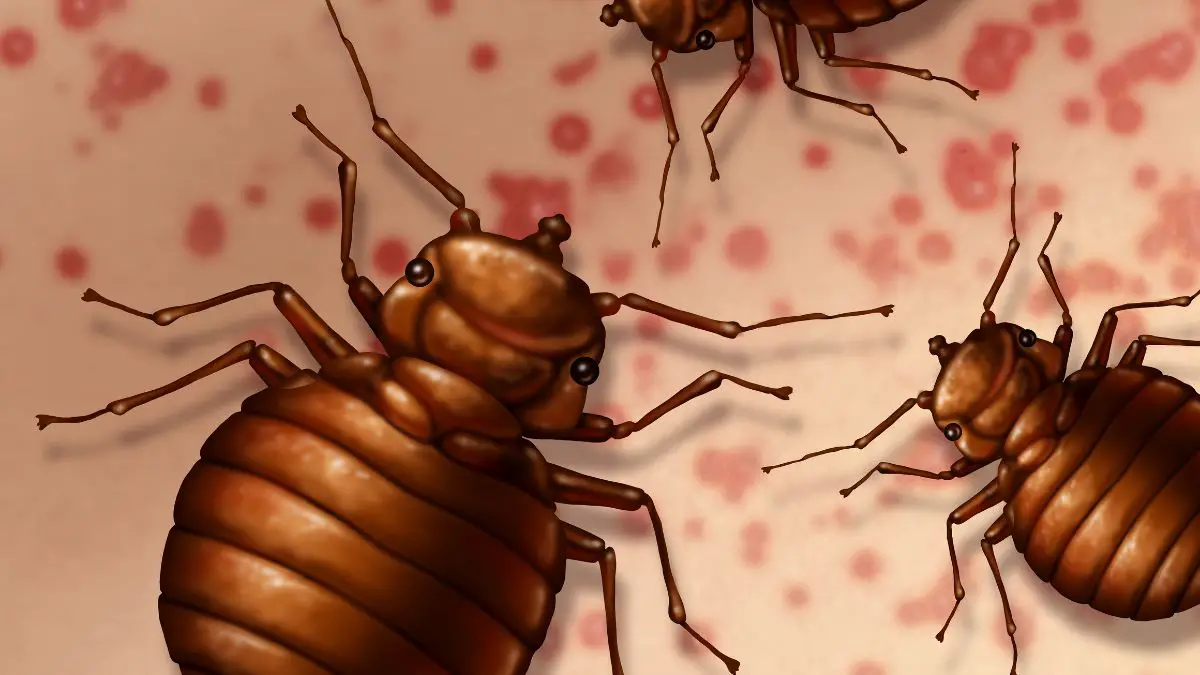Bed bugs are a nuisance that can be both uncomfortable and inconvenient to deal with. Regarding these pesky creatures, one of the most pressing concerns is whether or not they can bite through clothing.
In this article, we’ll provide you with a clear answer to this question and explore the topic of bed bugs and their biting behavior in greater depth!
What Are Bed Bugs?
Bed bugs are tiny, oval-shaped insects that feed on the blood of both humans and animals. With their flattened bodies and brown coloration, they can easily hide in small spaces and crevices.
These nocturnal pests are most active at night and prefer to feed on their hosts while they sleep.
Bed bugs can be found in various environments but are most commonly discovered in bedding, mattresses, and furniture.
They are also easily transferable via clothing, luggage, and other personal belongings, so taking precautions when traveling or coming into contact with infested areas is important.
Can Bed Bugs Bite Through Clothing?
Concerns about bed bugs biting through clothes are common among many people. The ability of bed bugs to pierce through clothing depends on various factors, such as the thickness of the fabric and the species of bed bugs involved.
Studies indicate that thinner fabrics, like those in bed linens and pillowcases, are more susceptible to bed bug bites.
In contrast, thicker materials, such as denim and wool, may provide some protection against bites.
Nevertheless, it’s important to remember that bed bugs are incredibly adaptable and can still access the skin by crawling beneath clothing or biting through small gaps in the fabric.
Expert sources and scientific research have demonstrated that bed bugs can bite through certain types of clothing.
As a result, it’s crucial to take preventative measures to avoid bed bug infestations and reduce the risk of bites.
How to Protect Yourself from Bed Bug Bites
There are several practical tips you can follow to prevent bed bug bites and protect yourself from these pesky insects:
- Use bed bug-proof mattress encasements and pillow protectors. These products are designed to prevent bed bugs from entering or escaping your mattress and pillows, reducing the risk of bites and infestations.
- Inspect hotel rooms before staying in them. When traveling, be sure to check the mattress, bedding, and furniture for signs of bed bugs, such as small reddish-brown insects. Dead bedbugs are also a giveaway, in appearance as well as their smell.
- Keep your living space clean and clutter-free. Regularly vacuum your home, wash your bedding, and reduce clutter to minimize potential hiding spots for bed bugs.
- Be cautious when bringing used furniture or clothing into your home. Always inspect these items thoroughly for signs of bed bugs, and consider treating them with heat or insecticides to kill any potential hitchhikers.
Early detection and treatment of bed bug infestations are crucial in preventing the spread of these insects and reducing the risk of bites. Be sure to look into bed bug traps as well to help solve the problem.
What to Do If You Have Been Bitten by Bed Bugs
If you suspect bed bugs have bitten you, it is important to recognize the symptoms and take appropriate action to alleviate the discomfort.
Bed bug bites are often small, red, and itchy and may appear in clusters or rows on the skin.
To alleviate the itching and discomfort associated with bed bug bites, you can try the following remedies:
- Apply a cold compress to the affected area to reduce swelling and inflammation.
- Take over-the-counter antihistamines to help alleviate itching and minimize the risk of an allergic reaction.
- Use topical creams or hydrocortisone ointments to soothe the skin and reduce itchiness.
If the symptoms of bed bug bites persist or worsen, it is important to seek medical attention.
Frequently Asked Questions (FAQs)
What do bed bug bites look like?
Bed bug bites typically appear as small, red, itchy bumps on the skin. They can be found in clusters or rows and are often located on exposed body areas, such as the face, neck, arms, and legs.
Can bed bugs live in your clothes?
While bed bugs prefer to hide in bedding, mattresses, and furniture, they can also be found in clothing, especially if it has been near an infested area. Inspecting and treating your clothing if you suspect a bed bug infestation is important.
How long can bed bugs live without feeding?
Bed bugs can survive for several months without feeding, depending on temperature and humidity. This is one of the reasons why taking thorough and consistent measures to eradicate bed bugs from your living space is essential.
Can bed bugs bite through blankets?
Bed bugs are more likely to bite through thinner fabrics, such as those in bedsheets and pillowcases. Thicker blankets may provide some protection against bites, but it is important to remember that bed bugs can still crawl underneath blankets to access the skin.
Do bed bugs bite every night?
While bed bugs are nocturnal and prefer to feed at night, they do not necessarily bite every night. The frequency of bites can vary depending on factors such as the bed bug population and the availability of hosts.
Wrapping it Up
In conclusion, bed bugs can bite through certain types of clothing, making it essential to take preventative measures to avoid bites and infestations.
By following practical tips, such as using bed bug-proof mattress encasements, inspecting hotel rooms, and maintaining a clean living space, you can reduce the risk of bed bug bites and ensure a more comfortable and bug-free environment.
Remember, early detection and treatment of bed bug infestations are key in preventing the spread of these pesky insects.


